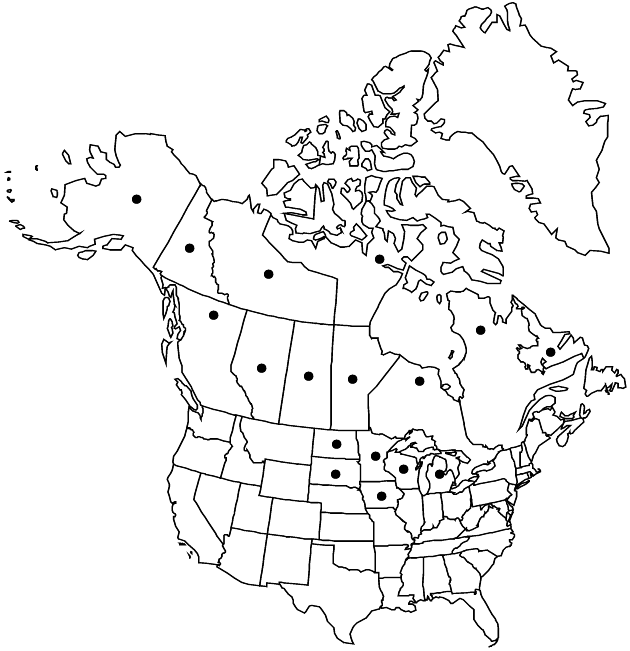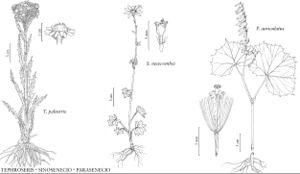Tephroseris palustris
Fl. Saxon., 146. 1842.
Annuals or biennials (perhaps rarely perennials), 20–100 cm (loosely arachnose or villous, hairs white, light yellowish, or reddish-brown, indument fugitive in some populations; caudices fibrous-rooted). Stems single. Leaves basal and cauline (basal and proximal sometimes withering before flowering, midstem leaves prominent at flowering); petioles weakly defined; blades oblanceolate to linear-oblanceolate or spatulate, 5–15 × 0.5–3 (–5) cm, margins subentire to coarsely dentate or subpinnatifid (distal leaves bractlike). Heads (4–) 6–20 (–40+), in loose to crowded, corymbiform arrays. Involucres ± abruptly contracted to peduncles. Phyllaries usually 21, green or yellowish green (tips sometimes pinkish), 4–10 mm. Ray-florets (13–) 21+; corolla laminae 5–9+ mm (sometimes incompletely opened, appearing tubular). Disc-florets 30–50; corollas yellow. Cypselae glabrous; pappi white or dirty white. 2n = 48.
Phenology: Flowering May–Sep.
Habitat: Wet soils, shorelines, pond margins, brackish habitats
Elevation: 0–1000 m
Distribution

Alta., B.C., Man., Nfld. and Labr. (Labr.), N.W.T., Nunavut, Ont., Que., Sask., Yukon, Alaska, Iowa, Mich., Minn., N.Dak., S.Dak., Wis., Eurasia
Discussion
Tephroseris palustris varies greatly in stature and in distribution and persistence of tomentum. The variations have been used to distinguish infraspecific taxa or two species; contemporary thought is that the complex is best treated as a single, polymorphic species.
Selected References
None.
